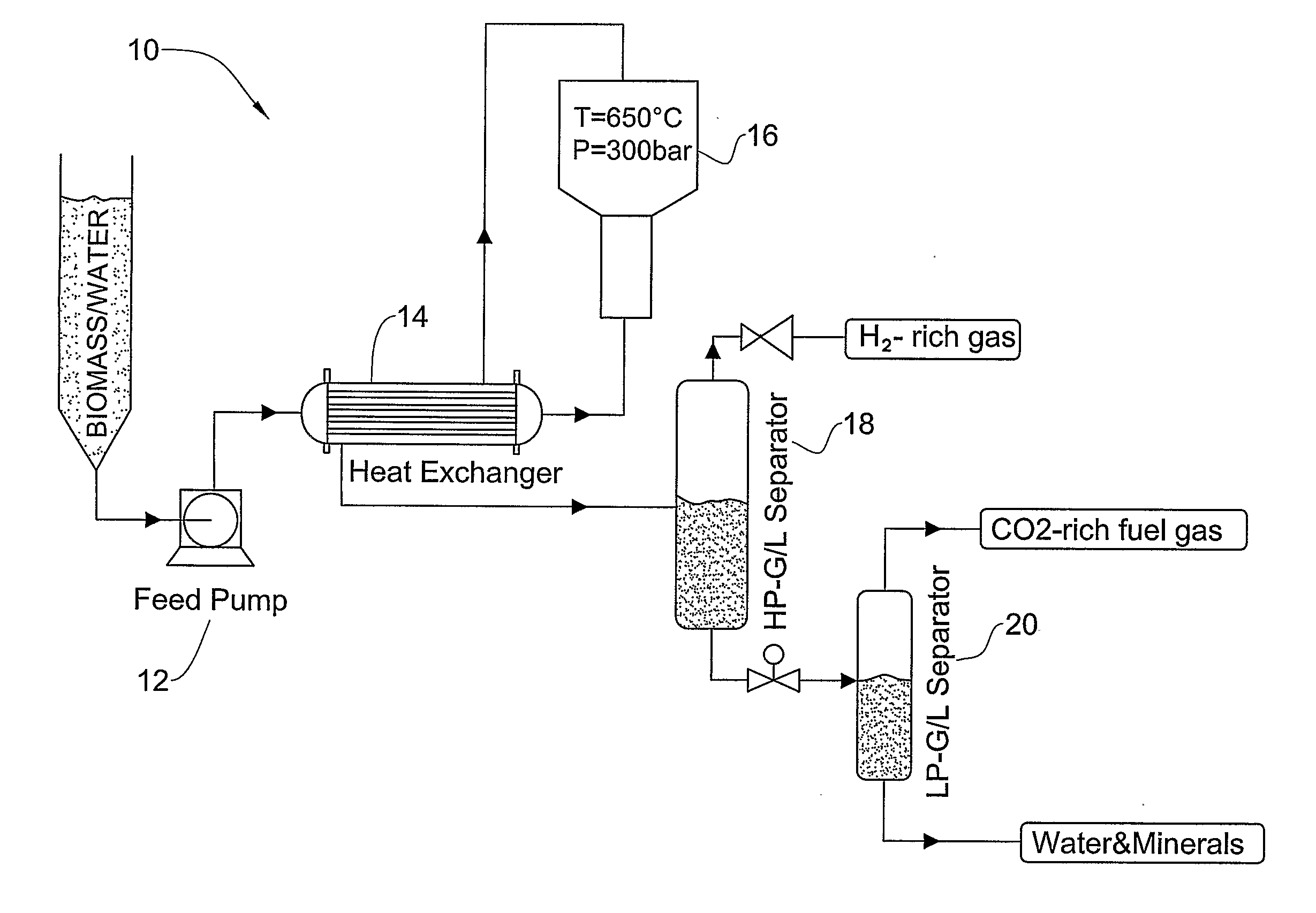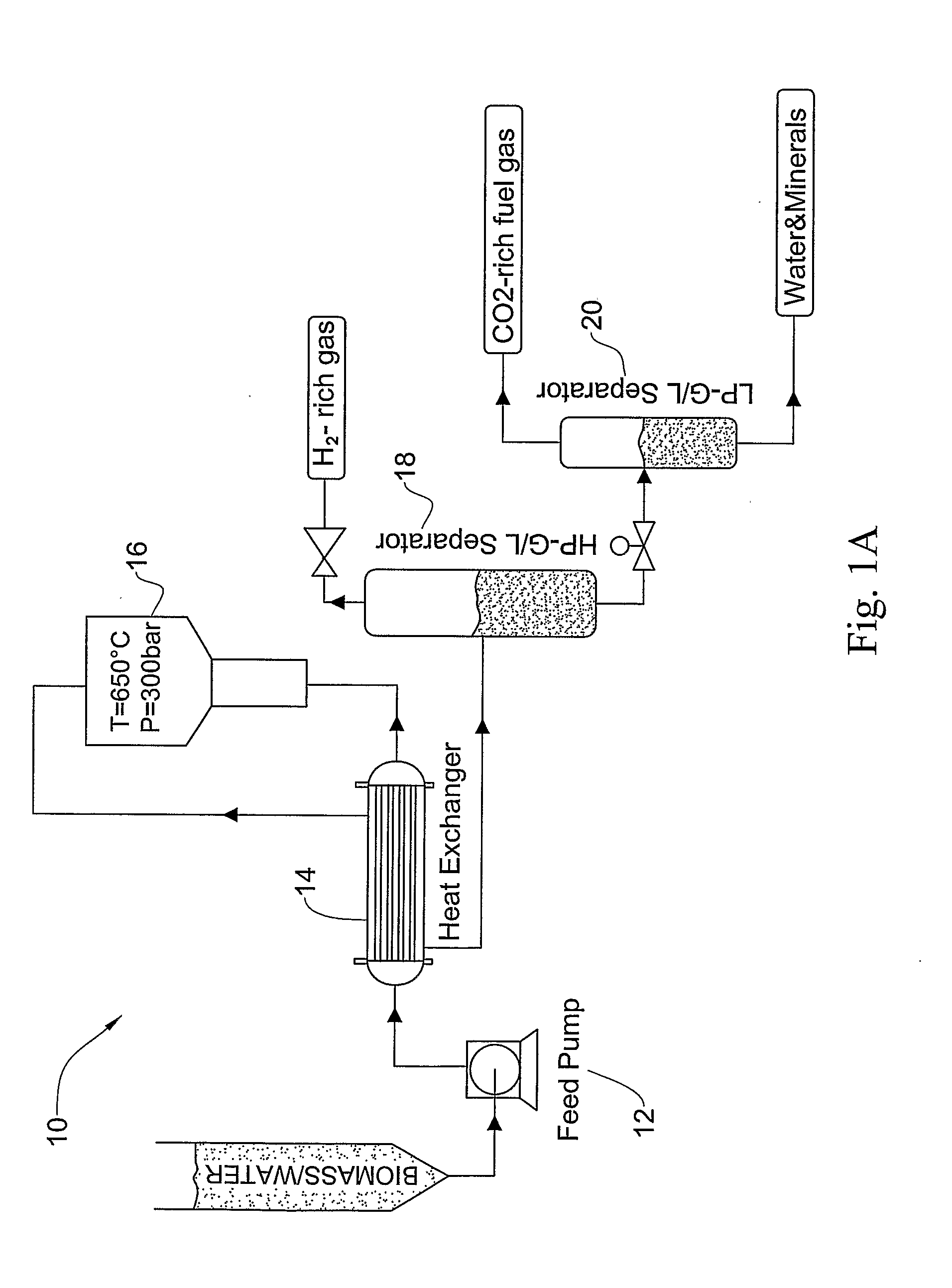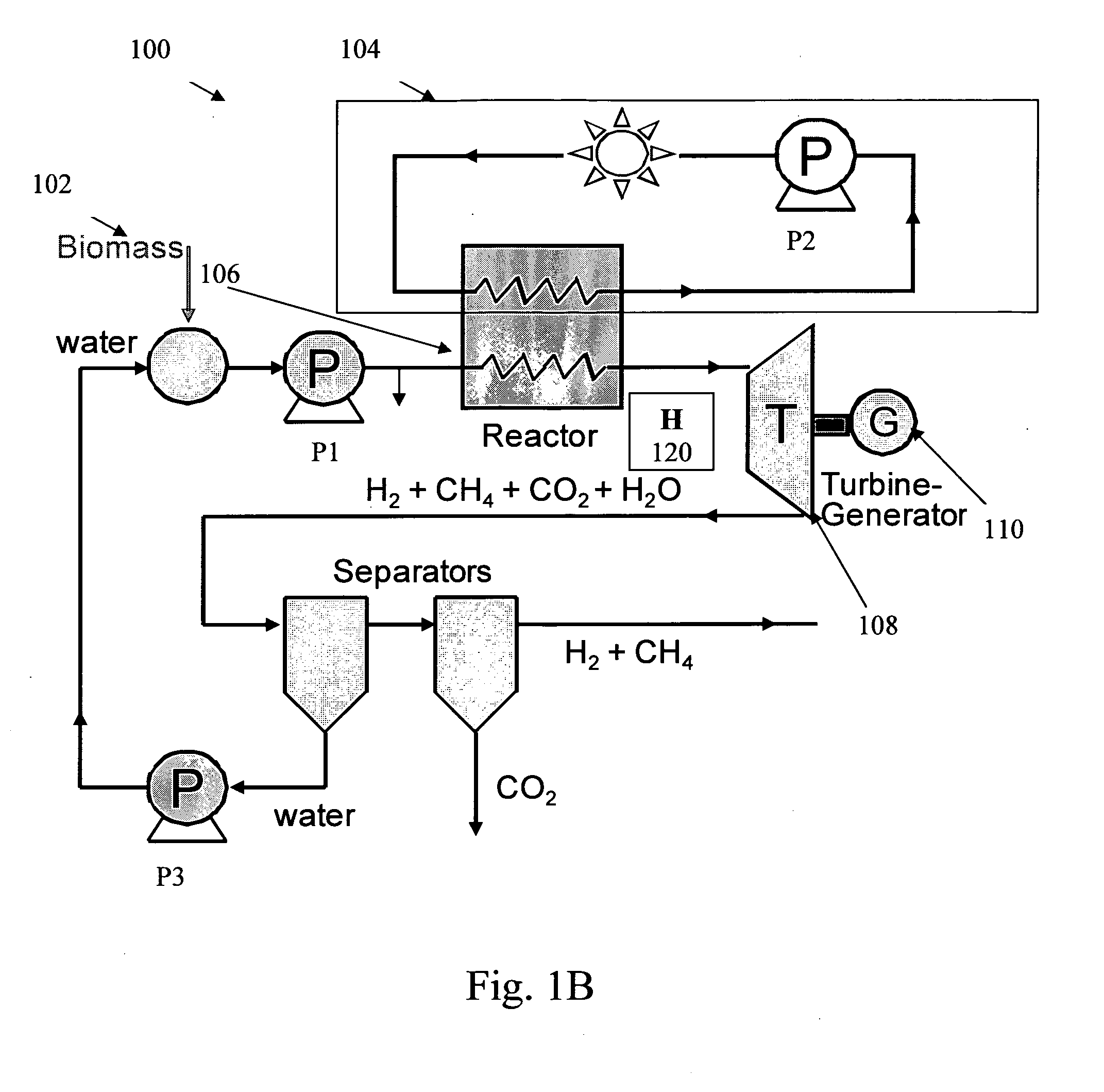Catalytic gasification of organic matter in supercritical water
a technology of organic matter and supercritical water, which is applied in the direction of metal/metal-oxide/metal-hydroxide catalysts, combustible gas production, bulk chemical production, etc., can solve the problems of high cost and energy-intensive treatment steps, and the effectiveness of the catalyst is not yet proven
- Summary
- Abstract
- Description
- Claims
- Application Information
AI Technical Summary
Benefits of technology
Problems solved by technology
Method used
Image
Examples
Embodiment Construction
[0077]The present invention provides an appropriate catalyst system for converting organic matter at high efficiency and in a reasonably short time. It should be understood that under SCWG conditions, in long-term operation of the known systems of the kind specified, effectiveness of the catalyst decreases because of the oxidation of the metal components in the process environment, sintering of the metal particles, coke and tar formation, and substrate disintegration.
[0078]Alkali catalysts, for example sodium carbonate, have been employed [9] for increasing the gasification efficiency of cellulose. Other alkalis such as K2CO3, KOH, NaOH and Na2CO3 are known to catalyze the water-gas shift reaction with the formation of H2 and CO2 instead of CO. Other catalysts such as Pt and Pd having lower activity have also been tested. Tests were also conducted with copper, molybdenum, tungsten, chromium and zinc metals, but these also showed very low level of catalytic activity. Activity of oxid...
PUM
| Property | Measurement | Unit |
|---|---|---|
| temperature | aaaaa | aaaaa |
| temperatures | aaaaa | aaaaa |
| weight percent | aaaaa | aaaaa |
Abstract
Description
Claims
Application Information
 Login to View More
Login to View More - R&D
- Intellectual Property
- Life Sciences
- Materials
- Tech Scout
- Unparalleled Data Quality
- Higher Quality Content
- 60% Fewer Hallucinations
Browse by: Latest US Patents, China's latest patents, Technical Efficacy Thesaurus, Application Domain, Technology Topic, Popular Technical Reports.
© 2025 PatSnap. All rights reserved.Legal|Privacy policy|Modern Slavery Act Transparency Statement|Sitemap|About US| Contact US: help@patsnap.com



